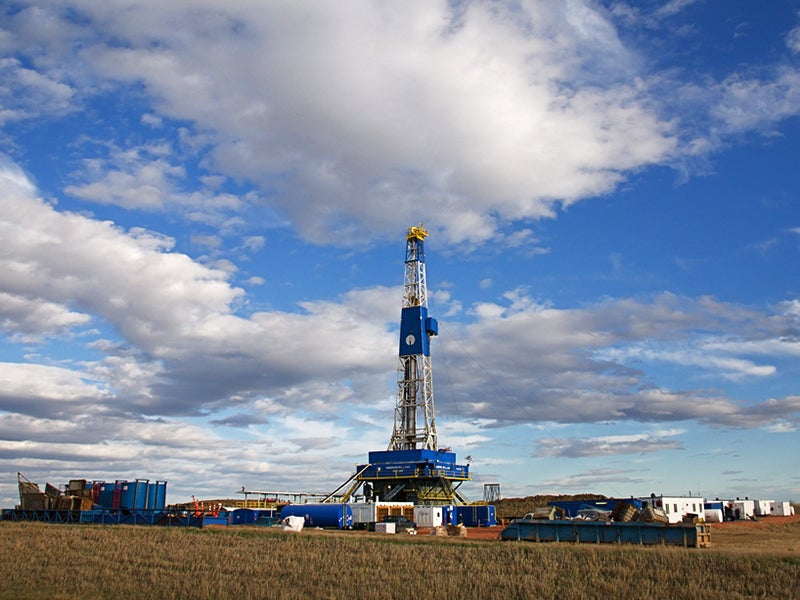In North Dakota, Fracking Could Become Even More Dangerous
Every boom must bust, and as oil prices fall, hydraulic fracturing operations in North Dakota cut costs and put workers at risk.

This page was published 10 years ago. Find the latest on Earthjustice’s work.
The oil and gas industry came to North Dakota promising salvation. They said that the oil and gas locked beneath the state—in the Bakken Shale—could be siphoned out using hydraulic fracturing. It was the new American gold rush.
What they didn’t mention was that housing prices for locals would skyrocket, that the open roads would be clogged by traffic jams, and that air quality would plummet. And they definitely didn’t remind North Dakotans that every boom must bust. The past year’s declining oil prices have wreaked havoc on North Dakota fracking operations; fracking just doesn’t pay off. As a result, oil-field service companies are under pressure to cut corners and workers are being put at risk.
At least eight workers died between October 2014 and March 2015 in North Dakota’s oil fields—more than the preceding 12 months combined. This rash of accidents began around the time the number of drilling rigs in the state started to decline, and according to federal safety officials, the increase in fatalities may be a result of company cost-cutting.
“With the drop in oil prices, companies may be looking to protect the profit margin by hiring contractors that are not experienced,” Eric Brooks, the director of the U.S. Occupational Safety and Health Administration office in Bismarck, North Dakota, told the Wall Street Journal.
The uptick in worker deaths is concerning, but North Dakota has been a dangerous workplace since the Bakken shale boom began. In the past three years the state has seen fires, explosions, train derailments, well blowouts, fracking fluid spills, soil and water contamination and more.
Before the energy industry grabbed hold, North Dakota’s main economic sector was farming. Now, farmers’ land is at risk of contamination from fracking accidents or “fraccidents.” In 2013, landowner Mike Artz and his two neighbors discovered that a ruptured pipeline was spewing contaminated wastewater into Artz’s fields. State testing of the area showed chloride levels so high they exceeded the range of the test strips, and the North Dakota Department of Health estimated that between 400 and 600 barrels of fracking wastewater—the equivalent of 16,800 to 25,200 gallons—had seeped into the ground.
In July 2014, more than a million gallons of salty drilling waste spilled from a pipeline onto a steep hillside in western North Dakota. The spill killed vegetation, contaminated the soil and infiltrated a tributary of Lake Sakakawea that provides drinking water to a nearby Native American reservation. These are just two of the more than 22 spills that occurred between 2012 and 2015, based on news reports gathered by Earthjustice.
Oil and gas companies rushed into North Dakota when oil prices were high and mined its resources with little regard for human or environmental impact. Now that profit margins have decreased and costs must be cut, the area is faced with an even bigger risk, especially since the Bureau of Land Management (BLM) hasn’t updated its oil and gas extraction regulations since 1988.
But the BLM recently came out with a new set of rules that will help regulate well integrity and waste management for high-volume hydraulic fracturing. Earthjustice is currently representing six conservation groups to defend the BLM’s new rules against legal challenges by the oil and gas industry. These rules will apply to more than 750 million acres of public and tribal lands across the United States, as well as private lands where minerals are federally managed. Hopefully these regulations will help keep oil and gas companies accountable for the destruction they’ve sewn.
To see just how common fraccidents are, check out Earthjustice’s newly updated map Fracking Across the United States. In the past four years, more than 200 fraccidents occurred in the U.S., including gas well blowouts, waste water spills, pipeline explosions, traffic accidents, air and water contamination and earthquakes. We’re keeping track.